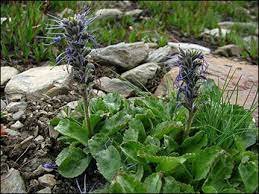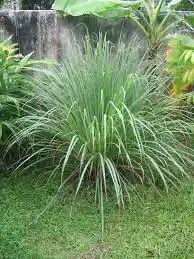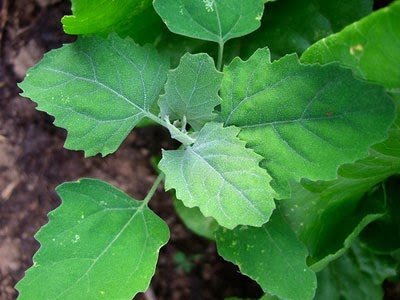Cauliflower Nutrition Requirements
Nutrition required by Cauliflower at each stage of its life cycle.
SOIL PREPARATION

Soil Preparation
Sure, preparing the soil properly is crucial for the successful cultivation of cauliflower. Here's a guide on soil preparation methods and the nutritional requirements for cauliflower:
Soil Preparation Method:
1. **Choose the Right Location**: Cauliflower prefers a sunny location with well-drained soil. Select a spot in your garden that receives full sun for at least 6-8 hours a day.
2. **Soil Testing**: Before planting, it's a good idea to test your soil to determine its pH and nutrient levels. Cauliflower prefers slightly acidic to neutral soil with a pH range of 6.0 to 7.0.
3. **Clear the Area**: Remove any weeds, rocks, or debris from the planting area. Cauliflower needs space to grow, so ensure there's enough room between plants for proper air circulation.
4. **Add Organic Matter**: Incorporate organic matter into the soil such as compost, well-rotted manure, or leaf mold. This helps improve soil structure, fertility, and water retention.
5. **Fertilization**: Based on the soil test results, add fertilizers as needed. A balanced fertilizer such as 10-10-10 or 5-10-10 can be applied according to the recommended rates.
6. **Till the Soil**: Use a garden tiller or a hand tool to till the soil to a depth of 6-8 inches. This loosens the soil and creates a better environment for root growth.
7. **Level the Soil**: After tilling, level the soil surface using a rake to create a smooth planting bed.
Nutrition Requirements at Soil Preparation Stage:
1. **Nitrogen (N)**: Cauliflower requires a significant amount of nitrogen for vigorous leaf and stem growth. Incorporate nitrogen-rich fertilizers such as blood meal, fish meal, or composted poultry manure into the soil during preparation.
2. **Phosphorus (P)**: Phosphorus is essential for root development and overall plant health. Add phosphorus-rich fertilizers like bone meal or rock phosphate to the soil before planting.
3. **Potassium (K)**: Potassium helps in the formation of strong stems and enhances the plant's resistance to diseases and stress. Potassium can be supplemented with fertilizers such as wood ash or potassium sulfate.
4. **Micronutrients**: Cauliflower also requires micronutrients like calcium, magnesium, iron, and boron for healthy growth. Incorporating well-balanced organic matter into the soil helps ensure the availability of these micronutrients.
5. **pH Adjustment**: Ensure the soil pH is within the optimal range (6.0 to 7.0) for cauliflower cultivation. If the soil pH is too low or too high, adjust it by adding lime to raise pH or elemental sulfur to lower pH.
By following these soil preparation methods and providing the necessary nutrients, you can create an optimal growing environment for cauliflower, resulting in healthy plants and a bountiful harvest.
Early Growth (Germination to Establishment)

Early Growth
During the early growth stage of cauliflower, from germination to establishment, the nutritional needs of the plant are primarily focused on providing the essential elements for strong root development, healthy foliage growth, and the establishment of a robust plant structure. Here are the key nutritional requirements during this stage:
1. **Nitrogen (N)**: Nitrogen is crucial during the early growth stage as it promotes vigorous vegetative growth, including the development of leaves and stems. Apply nitrogen-rich fertilizers such as ammonium sulfate, urea, or organic sources like composted manure to provide an adequate supply of nitrogen to the growing plants.
2. **Phosphorus (P)**: Phosphorus plays a vital role in promoting strong root development and early establishment of the cauliflower plant. Adequate phosphorus is necessary for the formation of healthy root systems, which facilitate nutrient uptake and water absorption. Apply phosphorus-containing fertilizers such as superphosphate or bone meal to support root growth during this stage.
3. **Potassium (K)**: Potassium is essential for overall plant vigor and helps in the synthesis of carbohydrates, protein, and chlorophyll. It also contributes to disease resistance and stress tolerance. Ensure an adequate supply of potassium by using potassium-rich fertilizers such as potassium sulfate or potassium nitrate.
4. **Calcium (Ca)**: Calcium is important for cell wall development and overall plant structure. It helps in preventing disorders such as tip burn in cauliflower. Ensure sufficient calcium availability in the soil by incorporating calcium-containing fertilizers like gypsum or lime.
5. **Magnesium (Mg)**: Magnesium is a component of chlorophyll, essential for photosynthesis and overall plant growth. It plays a critical role in energy transfer within the plant. Apply magnesium-containing fertilizers such as magnesium sulfate (Epsom salt) to prevent magnesium deficiency symptoms.
6. **Micronutrients**: Provide micronutrients such as iron, manganese, zinc, copper, and boron to prevent deficiencies and ensure optimal growth and development. Micronutrient deficiencies can manifest as yellowing of leaves, stunted growth, or leaf curling. Consider foliar applications of micronutrient sprays or incorporate micronutrient-rich amendments into the soil.
7. **pH Monitoring**: Regularly monitor soil pH to ensure it remains within the optimal range (6.0 to 7.0) for cauliflower growth. pH levels outside this range can affect nutrient availability to the plants. Adjust pH if necessary using soil amendments like lime or sulfur.
By meeting these nutritional requirements during the early growth stage, you can support healthy development and establishment of cauliflower plants, laying the foundation for successful growth and eventual harvest.
Tillering Stage (Shoot Development)

Tillering Stage
During the tillering stage, also known as shoot development, cauliflower plants require specific nutrients to support the growth and development of shoots, leaves, and the formation of the future head. Here are the key nutritional requirements for cauliflower during this stage:
1. **Nitrogen (N)**: Nitrogen continues to be essential during the tillering stage as it supports the development of vigorous shoots and leaves. Adequate nitrogen promotes lush foliage growth and helps in the formation of a healthy canopy. Apply nitrogen-rich fertilizers such as ammonium sulfate or urea to meet the plant's demand for nitrogen.
2. **Phosphorus (P)**: Phosphorus remains important during the tillering stage to support root development and overall plant vigor. Adequate phosphorus encourages strong shoot growth and enhances the plant's ability to utilize nitrogen efficiently. Apply phosphorus-containing fertilizers such as superphosphate to ensure an adequate supply of phosphorus to the growing plants.
3. **Potassium (K)**: Potassium plays a crucial role during the tillering stage by promoting shoot development, improving drought tolerance, and enhancing disease resistance. Adequate potassium levels contribute to sturdy stem growth and overall plant health. Apply potassium-rich fertilizers such as potassium sulfate or potassium nitrate to meet the plant's potassium requirements.
4. **Calcium (Ca)**: Calcium is essential for cell wall development and structural integrity in plants. During the tillering stage, sufficient calcium availability is crucial to prevent disorders such as tip burn and promote healthy shoot growth. Incorporate calcium-containing fertilizers such as gypsum or lime to ensure an adequate supply of calcium to the plants.
5. **Magnesium (Mg)**: Magnesium is a component of chlorophyll and is essential for photosynthesis, energy transfer, and enzyme activation. Adequate magnesium levels promote healthy shoot development and prevent deficiency symptoms such as yellowing of leaves. Apply magnesium-containing fertilizers such as magnesium sulfate (Epsom salt) to supplement magnesium if needed.
6. **Micronutrients**: Provide micronutrients such as iron, manganese, zinc, copper, and boron to prevent deficiencies and support optimal shoot development. Micronutrients play essential roles in enzyme activation, hormone synthesis, and overall plant metabolism. Consider foliar applications of micronutrient sprays or soil amendments to ensure micronutrient availability to the plants.
7. **pH Monitoring**: Regularly monitor soil pH to ensure it remains within the optimal range (6.0 to 7.0) for cauliflower growth. pH levels outside this range can affect nutrient availability to the plants. Adjust pH if necessary using soil amendments like lime or sulfur.
Meeting these nutritional requirements during the tillering stage ensures robust shoot development, lush foliage growth, and prepares the cauliflower plants for the subsequent stages of growth leading to the formation of heads.
Flowering

Flowering
During the flowering stage, cauliflower plants undergo significant physiological changes as they prepare for the formation and maturation of the edible curd or head. Meeting the specific nutritional requirements during this stage is crucial to support healthy flowering, curd development, and overall plant productivity. Here are the key nutritional requirements for cauliflower during the flowering stage:
1. **Potassium (K)**: Potassium plays a crucial role during the flowering stage as it promotes flower initiation, development, and fruit set. Adequate potassium levels contribute to the formation of well-developed curds and enhance the plant's resistance to diseases and environmental stresses. Apply potassium-rich fertilizers such as potassium sulfate or potassium nitrate to meet the plant's potassium requirements.
2. **Phosphorus (P)**: Phosphorus remains important during the flowering stage to support reproductive growth and flower development. Adequate phosphorus levels contribute to the formation of strong flower stalks and facilitate the transfer of energy during flowering. Apply phosphorus-containing fertilizers such as superphosphate to ensure an adequate supply of phosphorus to the flowering plants.
3. **Calcium (Ca)**: Calcium is essential for proper curd development and quality in cauliflower. Adequate calcium availability during the flowering stage helps prevent disorders such as hollow stem and improves curd firmness. Incorporate calcium-containing fertilizers such as gypsum or lime to ensure an adequate supply of calcium to the plants.
4. **Magnesium (Mg)**: Magnesium is important during the flowering stage as it supports chlorophyll synthesis, enzyme activation, and overall plant metabolism. Adequate magnesium levels contribute to healthy flower development and curd formation. Apply magnesium-containing fertilizers such as magnesium sulfate (Epsom salt) to supplement magnesium if needed.
5. **Nitrogen (N)**: While nitrogen requirements decrease during the flowering stage compared to earlier growth stages, a moderate supply of nitrogen is still necessary to support ongoing plant growth and curd development. However, excessive nitrogen during this stage can delay curd maturity and result in poor-quality heads. Apply nitrogen-containing fertilizers judiciously to maintain a balanced nitrogen supply.
6. **Micronutrients**: Provide micronutrients such as boron, zinc, and manganese to support flower development, pollen viability, and fruit set. Micronutrient deficiencies can lead to poor flower formation and reduced yields. Consider foliar applications of micronutrient sprays or soil amendments to ensure micronutrient availability to the plants.
7. **pH Monitoring**: Regularly monitor soil pH to ensure it remains within the optimal range (6.0 to 7.0) for cauliflower growth. pH levels outside this range can affect nutrient availability to the plants. Adjust pH if necessary using soil amendments like lime or sulfur.
Meeting these nutritional requirements during the flowering stage ensures optimal flower development, curd formation, and overall plant health, leading to a successful cauliflower harvest.
Matchuration & Ripening

Matchuration & Ripening
During the maturation and ripening stage of cauliflower, the plant undergoes final growth processes leading to the development of mature heads ready for harvest. Proper nutrition during this stage is essential to support the completion of curd development, enhance curd quality, and ensure optimal flavor and texture. Here are the key nutritional requirements for cauliflower during the maturation and ripening stage:
1. **Potassium (K)**: Potassium continues to be important during the maturation and ripening stage as it supports the final development and filling of the cauliflower curd. Adequate potassium levels contribute to curd firmness, size, and quality. Apply potassium-rich fertilizers such as potassium sulfate or potassium nitrate to meet the plant's potassium requirements during this stage.
2. **Calcium (Ca)**: Calcium is crucial during the maturation and ripening stage to ensure curd firmness, texture, and quality. Adequate calcium availability helps prevent disorders such as hollow stem and maintains curd integrity during handling and storage. Incorporate calcium-containing fertilizers such as gypsum or lime to ensure an adequate supply of calcium to the plants.
3. **Phosphorus (P)**: Phosphorus plays a role in supporting final curd development and maturity during the maturation and ripening stage. Adequate phosphorus levels contribute to curd filling and quality. Apply phosphorus-containing fertilizers such as superphosphate to ensure an adequate supply of phosphorus to the plants during this stage.
4. **Nitrogen (N)**: Nitrogen requirements decrease during the maturation and ripening stage compared to earlier growth stages. Excessive nitrogen during this stage can lead to delayed maturity and poor curd quality. However, a moderate supply of nitrogen may still be necessary to support final growth processes. Apply nitrogen-containing fertilizers judiciously to maintain a balanced nitrogen supply.
5. **Micronutrients**: Provide micronutrients such as boron, zinc, and manganese to support final curd development, quality, and flavor during the maturation and ripening stage. Micronutrient deficiencies can affect curd formation and lead to poor-quality heads. Consider foliar applications of micronutrient sprays or soil amendments to ensure micronutrient availability to the plants.
6. **Water Management**: Proper water management is crucial during the maturation and ripening stage to support curd development and prevent stress-related disorders. Maintain adequate soil moisture levels, avoiding both waterlogging and drought stress.
7. **Harvest Timing**: Harvest cauliflower heads at the appropriate stage of maturity when the curds are firm, compact, and fully developed. Delayed harvesting can lead to overmature heads with reduced quality and flavor.
By meeting these nutritional requirements and managing other factors such as water and harvest timing, you can ensure the successful maturation and ripening of cauliflower heads, resulting in high-quality produce ready for harvest.
Harvesting

Harvesting
Cauliflower Farming Economics
Get details of Profitability and cost estimate in growing Cauliflower per acres of Land.
SOIL PREPARATION

Soil Preparation
Soil preparation is a crucial step in wheat cultivation, as it directly affects the crop's growth and yield. Here are the soil preparation methods and nutrition requirements at the soil preparation stage for wheat:
Soil Preparation Method:
Land Preparation: Plow the field to break the soil and turn it over. Use a disc harrow or cultivator to further break down clods and level the soil. Ensure proper seedbed preparation by creating a fine, well-tilled soil surface.
Seedbed Preparation: Level the field to provide a uniform surface for planting. Use a roller or a harrow to firm up the soil to facilitate seed-to-soil contact. Remove any weeds or crop residues from the previous season to reduce competition with the wheat crop.
Seed Rate and Sowing: Determine the appropriate seed rate based on the variety and local recommendations. Use a suitable seed drill for uniform and precise sowing. Ensure proper seed depth according to recommended guidelines.
Fertilization: Apply a balanced fertilizer based on soil nutrient analysis and regional recommendations. Incorporate fertilizers into the soil during seedbed preparation. Consider applying phosphorus and potassium along with nitrogen for optimal wheat growth.
Organic Matter: Incorporate well-rotted organic matter, such as compost or manure, into the soil. Organic matter enhances soil structure, water retention, and nutrient availability.
pH Adjustment: Check and adjust soil pH to the recommended range for wheat cultivation (typically around 6.0 to 7.5). Lime may be added to raise pH, and sulfur may be added to lower pH as needed.
Nutrition Requirement at Soil Preparation Stage: Nitrogen (N): Nitrogen is essential for vegetative growth and is crucial during the early stages of wheat development. Apply nitrogen fertilizer during soil preparation to provide an initial boost to the crop.
Phosphorus (P): Phosphorus is vital for root development and early plant establishment. Apply phosphorus-containing fertilizers, such as diammonium phosphate (DAP), during soil preparation.
Potassium (K): Potassium supports overall plant health, disease resistance, and drought tolerance. Apply potassium-containing fertilizers, such as potassium chloride (Muriate of Potash), during soil preparation.
Micronutrients: Consider incorporating micronutrients like zinc, copper, and boron based on soil testing results. Micronutrients play essential roles in enzyme activities and overall plant health.
Organic Matter: Organic matter contributes to nutrient availability and improves the soil's water-holding capacity. Ensure a good supply of organic matter through the incorporation of well-decomposed compost or manure.
Soil pH: Adjust soil pH to the recommended range for wheat cultivation to optimize nutrient uptake by the plants.
Microbial Activity: Encourage beneficial microbial activity in the soil by incorporating organic matter. Healthy soil microbial communities contribute to nutrient cycling and availability.
Water Management: Ensure proper drainage to prevent waterlogging, which can negatively impact nutrient uptake. Irrigate if necessary to maintain adequate soil moisture during wheat establishment.
Early Growth (Germination to Establishment)

Early Growth
Soil preparation is a crucial step in wheat cultivation, as it directly affects the crop's growth and yield. Here are the soil preparation methods and nutrition requirements at the soil preparation stage for wheat:
Soil Preparation Method:
Land Preparation: Plow the field to break the soil and turn it over. Use a disc harrow or cultivator to further break down clods and level the soil. Ensure proper seedbed preparation by creating a fine, well-tilled soil surface.
Seedbed Preparation: Level the field to provide a uniform surface for planting. Use a roller or a harrow to firm up the soil to facilitate seed-to-soil contact. Remove any weeds or crop residues from the previous season to reduce competition with the wheat crop.
Seed Rate and Sowing: Determine the appropriate seed rate based on the variety and local recommendations. Use a suitable seed drill for uniform and precise sowing. Ensure proper seed depth according to recommended guidelines.
Fertilization: Apply a balanced fertilizer based on soil nutrient analysis and regional recommendations. Incorporate fertilizers into the soil during seedbed preparation. Consider applying phosphorus and potassium along with nitrogen for optimal wheat growth.
Organic Matter: Incorporate well-rotted organic matter, such as compost or manure, into the soil. Organic matter enhances soil structure, water retention, and nutrient availability.
pH Adjustment: Check and adjust soil pH to the recommended range for wheat cultivation (typically around 6.0 to 7.5). Lime may be added to raise pH, and sulfur may be added to lower pH as needed.
Nutrition Requirement at Soil Preparation Stage: Nitrogen (N): Nitrogen is essential for vegetative growth and is crucial during the early stages of wheat development. Apply nitrogen fertilizer during soil preparation to provide an initial boost to the crop.
Phosphorus (P): Phosphorus is vital for root development and early plant establishment. Apply phosphorus-containing fertilizers, such as diammonium phosphate (DAP), during soil preparation.
Potassium (K): Potassium supports overall plant health, disease resistance, and drought tolerance. Apply potassium-containing fertilizers, such as potassium chloride (Muriate of Potash), during soil preparation.
Micronutrients: Consider incorporating micronutrients like zinc, copper, and boron based on soil testing results. Micronutrients play essential roles in enzyme activities and overall plant health.
Organic Matter: Organic matter contributes to nutrient availability and improves the soil's water-holding capacity. Ensure a good supply of organic matter through the incorporation of well-decomposed compost or manure.
Soil pH: Adjust soil pH to the recommended range for wheat cultivation to optimize nutrient uptake by the plants.
Microbial Activity: Encourage beneficial microbial activity in the soil by incorporating organic matter. Healthy soil microbial communities contribute to nutrient cycling and availability.
Water Management: Ensure proper drainage to prevent waterlogging, which can negatively impact nutrient uptake. Irrigate if necessary to maintain adequate soil moisture during wheat establishment.
Tillering Stage (Shoot Development)

Tillering Stage
Soil preparation is a crucial step in wheat cultivation, as it directly affects the crop's growth and yield. Here are the soil preparation methods and nutrition requirements at the soil preparation stage for wheat:
Soil Preparation Method:
Land Preparation: Plow the field to break the soil and turn it over. Use a disc harrow or cultivator to further break down clods and level the soil. Ensure proper seedbed preparation by creating a fine, well-tilled soil surface.
Seedbed Preparation: Level the field to provide a uniform surface for planting. Use a roller or a harrow to firm up the soil to facilitate seed-to-soil contact. Remove any weeds or crop residues from the previous season to reduce competition with the wheat crop.
Seed Rate and Sowing: Determine the appropriate seed rate based on the variety and local recommendations. Use a suitable seed drill for uniform and precise sowing. Ensure proper seed depth according to recommended guidelines.
Fertilization: Apply a balanced fertilizer based on soil nutrient analysis and regional recommendations. Incorporate fertilizers into the soil during seedbed preparation. Consider applying phosphorus and potassium along with nitrogen for optimal wheat growth.
Organic Matter: Incorporate well-rotted organic matter, such as compost or manure, into the soil. Organic matter enhances soil structure, water retention, and nutrient availability.
pH Adjustment: Check and adjust soil pH to the recommended range for wheat cultivation (typically around 6.0 to 7.5). Lime may be added to raise pH, and sulfur may be added to lower pH as needed.
Nutrition Requirement at Soil Preparation Stage: Nitrogen (N): Nitrogen is essential for vegetative growth and is crucial during the early stages of wheat development. Apply nitrogen fertilizer during soil preparation to provide an initial boost to the crop.
Phosphorus (P): Phosphorus is vital for root development and early plant establishment. Apply phosphorus-containing fertilizers, such as diammonium phosphate (DAP), during soil preparation.
Potassium (K): Potassium supports overall plant health, disease resistance, and drought tolerance. Apply potassium-containing fertilizers, such as potassium chloride (Muriate of Potash), during soil preparation.
Micronutrients: Consider incorporating micronutrients like zinc, copper, and boron based on soil testing results. Micronutrients play essential roles in enzyme activities and overall plant health.
Organic Matter: Organic matter contributes to nutrient availability and improves the soil's water-holding capacity. Ensure a good supply of organic matter through the incorporation of well-decomposed compost or manure.
Soil pH: Adjust soil pH to the recommended range for wheat cultivation to optimize nutrient uptake by the plants.
Microbial Activity: Encourage beneficial microbial activity in the soil by incorporating organic matter. Healthy soil microbial communities contribute to nutrient cycling and availability.
Water Management: Ensure proper drainage to prevent waterlogging, which can negatively impact nutrient uptake. Irrigate if necessary to maintain adequate soil moisture during wheat establishment.
Flowering

Flowering
Soil preparation is a crucial step in wheat cultivation, as it directly affects the crop's growth and yield. Here are the soil preparation methods and nutrition requirements at the soil preparation stage for wheat:
Soil Preparation Method:
Land Preparation: Plow the field to break the soil and turn it over. Use a disc harrow or cultivator to further break down clods and level the soil. Ensure proper seedbed preparation by creating a fine, well-tilled soil surface.
Seedbed Preparation: Level the field to provide a uniform surface for planting. Use a roller or a harrow to firm up the soil to facilitate seed-to-soil contact. Remove any weeds or crop residues from the previous season to reduce competition with the wheat crop.
Seed Rate and Sowing: Determine the appropriate seed rate based on the variety and local recommendations. Use a suitable seed drill for uniform and precise sowing. Ensure proper seed depth according to recommended guidelines.
Fertilization: Apply a balanced fertilizer based on soil nutrient analysis and regional recommendations. Incorporate fertilizers into the soil during seedbed preparation. Consider applying phosphorus and potassium along with nitrogen for optimal wheat growth.
Organic Matter: Incorporate well-rotted organic matter, such as compost or manure, into the soil. Organic matter enhances soil structure, water retention, and nutrient availability.
pH Adjustment: Check and adjust soil pH to the recommended range for wheat cultivation (typically around 6.0 to 7.5). Lime may be added to raise pH, and sulfur may be added to lower pH as needed.
Nutrition Requirement at Soil Preparation Stage: Nitrogen (N): Nitrogen is essential for vegetative growth and is crucial during the early stages of wheat development. Apply nitrogen fertilizer during soil preparation to provide an initial boost to the crop.
Phosphorus (P): Phosphorus is vital for root development and early plant establishment. Apply phosphorus-containing fertilizers, such as diammonium phosphate (DAP), during soil preparation.
Potassium (K): Potassium supports overall plant health, disease resistance, and drought tolerance. Apply potassium-containing fertilizers, such as potassium chloride (Muriate of Potash), during soil preparation.
Micronutrients: Consider incorporating micronutrients like zinc, copper, and boron based on soil testing results. Micronutrients play essential roles in enzyme activities and overall plant health.
Organic Matter: Organic matter contributes to nutrient availability and improves the soil's water-holding capacity. Ensure a good supply of organic matter through the incorporation of well-decomposed compost or manure.
Soil pH: Adjust soil pH to the recommended range for wheat cultivation to optimize nutrient uptake by the plants.
Microbial Activity: Encourage beneficial microbial activity in the soil by incorporating organic matter. Healthy soil microbial communities contribute to nutrient cycling and availability.
Water Management: Ensure proper drainage to prevent waterlogging, which can negatively impact nutrient uptake. Irrigate if necessary to maintain adequate soil moisture during wheat establishment.
Matchuration & Ripening

Matchuration & Ripening
Soil preparation is a crucial step in wheat cultivation, as it directly affects the crop's growth and yield. Here are the soil preparation methods and nutrition requirements at the soil preparation stage for wheat:
Soil Preparation Method:
Land Preparation: Plow the field to break the soil and turn it over. Use a disc harrow or cultivator to further break down clods and level the soil. Ensure proper seedbed preparation by creating a fine, well-tilled soil surface.
Seedbed Preparation: Level the field to provide a uniform surface for planting. Use a roller or a harrow to firm up the soil to facilitate seed-to-soil contact. Remove any weeds or crop residues from the previous season to reduce competition with the wheat crop.
Seed Rate and Sowing: Determine the appropriate seed rate based on the variety and local recommendations. Use a suitable seed drill for uniform and precise sowing. Ensure proper seed depth according to recommended guidelines.
Fertilization: Apply a balanced fertilizer based on soil nutrient analysis and regional recommendations. Incorporate fertilizers into the soil during seedbed preparation. Consider applying phosphorus and potassium along with nitrogen for optimal wheat growth.
Organic Matter: Incorporate well-rotted organic matter, such as compost or manure, into the soil. Organic matter enhances soil structure, water retention, and nutrient availability.
pH Adjustment: Check and adjust soil pH to the recommended range for wheat cultivation (typically around 6.0 to 7.5). Lime may be added to raise pH, and sulfur may be added to lower pH as needed.
Nutrition Requirement at Soil Preparation Stage: Nitrogen (N): Nitrogen is essential for vegetative growth and is crucial during the early stages of wheat development. Apply nitrogen fertilizer during soil preparation to provide an initial boost to the crop.
Phosphorus (P): Phosphorus is vital for root development and early plant establishment. Apply phosphorus-containing fertilizers, such as diammonium phosphate (DAP), during soil preparation.
Potassium (K): Potassium supports overall plant health, disease resistance, and drought tolerance. Apply potassium-containing fertilizers, such as potassium chloride (Muriate of Potash), during soil preparation.
Micronutrients: Consider incorporating micronutrients like zinc, copper, and boron based on soil testing results. Micronutrients play essential roles in enzyme activities and overall plant health.
Organic Matter: Organic matter contributes to nutrient availability and improves the soil's water-holding capacity. Ensure a good supply of organic matter through the incorporation of well-decomposed compost or manure.
Soil pH: Adjust soil pH to the recommended range for wheat cultivation to optimize nutrient uptake by the plants.
Microbial Activity: Encourage beneficial microbial activity in the soil by incorporating organic matter. Healthy soil microbial communities contribute to nutrient cycling and availability.
Water Management: Ensure proper drainage to prevent waterlogging, which can negatively impact nutrient uptake. Irrigate if necessary to maintain adequate soil moisture during wheat establishment.
Harvesting

Harvesting
Soil preparation is a crucial step in wheat cultivation, as it directly affects the crop's growth and yield. Here are the soil preparation methods and nutrition requirements at the soil preparation stage for wheat:
Soil Preparation Method:
Land Preparation: Plow the field to break the soil and turn it over. Use a disc harrow or cultivator to further break down clods and level the soil. Ensure proper seedbed preparation by creating a fine, well-tilled soil surface.
Seedbed Preparation: Level the field to provide a uniform surface for planting. Use a roller or a harrow to firm up the soil to facilitate seed-to-soil contact. Remove any weeds or crop residues from the previous season to reduce competition with the wheat crop.
Seed Rate and Sowing: Determine the appropriate seed rate based on the variety and local recommendations. Use a suitable seed drill for uniform and precise sowing. Ensure proper seed depth according to recommended guidelines.
Fertilization: Apply a balanced fertilizer based on soil nutrient analysis and regional recommendations. Incorporate fertilizers into the soil during seedbed preparation. Consider applying phosphorus and potassium along with nitrogen for optimal wheat growth.
Organic Matter: Incorporate well-rotted organic matter, such as compost or manure, into the soil. Organic matter enhances soil structure, water retention, and nutrient availability.
pH Adjustment: Check and adjust soil pH to the recommended range for wheat cultivation (typically around 6.0 to 7.5). Lime may be added to raise pH, and sulfur may be added to lower pH as needed.
Nutrition Requirement at Soil Preparation Stage: Nitrogen (N): Nitrogen is essential for vegetative growth and is crucial during the early stages of wheat development. Apply nitrogen fertilizer during soil preparation to provide an initial boost to the crop.
Phosphorus (P): Phosphorus is vital for root development and early plant establishment. Apply phosphorus-containing fertilizers, such as diammonium phosphate (DAP), during soil preparation.
Potassium (K): Potassium supports overall plant health, disease resistance, and drought tolerance. Apply potassium-containing fertilizers, such as potassium chloride (Muriate of Potash), during soil preparation.
Micronutrients: Consider incorporating micronutrients like zinc, copper, and boron based on soil testing results. Micronutrients play essential roles in enzyme activities and overall plant health.
Organic Matter: Organic matter contributes to nutrient availability and improves the soil's water-holding capacity. Ensure a good supply of organic matter through the incorporation of well-decomposed compost or manure.
Soil pH: Adjust soil pH to the recommended range for wheat cultivation to optimize nutrient uptake by the plants.
Microbial Activity: Encourage beneficial microbial activity in the soil by incorporating organic matter. Healthy soil microbial communities contribute to nutrient cycling and availability.
Water Management: Ensure proper drainage to prevent waterlogging, which can negatively impact nutrient uptake. Irrigate if necessary to maintain adequate soil moisture during wheat establishment.
Cauliflower Disease Details
Nutrition required by Cauliflower at each stage of its life cycle.
SOIL PREPARATION

Soil Preparation
Several diseases and pests can affect cauliflower plants, even during the soil preparation stage. Here are some common diseases and pests that can occur, along with precautions to prevent them:
Diseases:
1. **Damping-off**: This fungal disease affects seedlings, causing them to rot at the base of the stem. To prevent damping-off, use sterilized soil or soilless media for seed starting. Ensure good drainage and avoid overwatering. Additionally, treat seeds with fungicides before planting.
2. **Clubroot**: Clubroot is caused by a soil-borne pathogen and leads to the formation of swollen, distorted roots. To prevent clubroot, ensure proper soil drainage and avoid planting cauliflower in soils with a history of clubroot. Rotate crops regularly and choose resistant varieties if available.
3. **Fusarium wilt**: Fusarium wilt is a fungal disease that causes yellowing, wilting, and death of plants. To prevent Fusarium wilt, practice crop rotation and avoid planting cauliflower in soil where susceptible crops were grown in previous seasons. Maintain soil health and avoid overwatering, as Fusarium wilt thrives in wet conditions.
Pests:
1. **Cabbage Worms**: Cabbage worms are the larvae of cabbage butterflies and can damage cauliflower plants by feeding on leaves and heads. To prevent cabbage worms, use row covers or netting to protect plants from adult butterflies. Handpick and remove caterpillars from plants or use biological control methods such as introducing natural predators like parasitic wasps.
2. **Aphids**: Aphids are small, sap-sucking insects that can infest cauliflower plants, causing stunted growth and distorted leaves. To prevent aphids, encourage natural predators like ladybugs and lacewings by planting companion plants such as dill and fennel. Monitor plants regularly and use insecticidal soap or neem oil if aphid populations become problematic.
3. **Cutworms**: Cutworms are nocturnal caterpillars that feed on young seedlings, cutting them off at the base. To prevent cutworm damage, use physical barriers such as cardboard collars around seedlings to protect them. Keep the garden area free of weeds and debris, as cutworms often hide in plant debris during the day.
4. **Slugs and Snails**: Slugs and snails can feed on cauliflower leaves and heads, causing damage. To prevent slug and snail damage, remove hiding places such as boards or debris where they can shelter during the day. Apply barriers such as copper tape or diatomaceous earth around plants to deter them.
5. **Root Maggots**: Root maggots are the larvae of certain flies and can feed on cauliflower roots, causing wilting and stunted growth. To prevent root maggot damage, use row covers or floating row covers to protect plants from egg-laying flies. Practice crop rotation and avoid planting cauliflower in areas where susceptible crops were grown in previous seasons.
By following these precautions and practicing good garden hygiene, you can help prevent diseases and pests from affecting cauliflower plants, starting from the soil preparation stage. Regular monitoring and early intervention are also essential for effective pest and disease management in cauliflower cultivation.
Early Growth (Germination to Establishment)

Early Growing
During the early growth stage of cauliflower, several diseases and pests can threaten the health and development of the plants. Here are some common diseases and pests that can occur during this stage, along with precautions to prevent them:
Diseases:
1. **Damping-off**: Damping-off is a fungal disease that affects seedlings, causing them to wilt and collapse at the soil level. To prevent damping-off, start with clean, sterile soil or soilless media for seed starting. Ensure proper air circulation and avoid overwatering. Treat seeds with fungicides before planting, and maintain optimal soil drainage conditions.
2. **Blackleg**: Blackleg is a fungal disease that causes dark lesions on the stems of young seedlings, leading to wilting and death. To prevent blackleg, use disease-free seeds from reputable sources. Practice crop rotation and avoid planting cauliflower in areas with a history of blackleg. Ensure good soil drainage and avoid overwatering to reduce disease risk.
Pests:
1. **Cutworms**: Cutworms are caterpillars that feed on young seedlings, cutting them off at the soil level. To prevent cutworm damage, use physical barriers such as cardboard collars around seedlings to protect them. Keep the garden area free of weeds and debris, as cutworms often hide in plant debris during the day.
2.** Aphids**: Aphids are small, sap-sucking insects that can infest cauliflower seedlings, causing stunted growth and distorted leaves. To prevent aphids, encourage natural predators like ladybugs and lacewings by planting companion plants such as dill and fennel. Monitor plants regularly and use insecticidal soap or neem oil if aphid populations become problematic.
3. **Flea Beetles**: Flea beetles are small, jumping insects that feed on young cauliflower seedlings, causing small holes in the leaves. To prevent flea beetle damage, use row covers or floating row covers to protect seedlings from adult beetles. Plant trap crops like radishes to attract flea beetles away from cauliflower plants.
4. **Wireworms**: Wireworms are the larvae of click beetles and can feed on cauliflower roots, causing stunted growth and wilting. To prevent wireworm damage, practice crop rotation and avoid planting cauliflower in areas where susceptible crops were grown in previous seasons. Monitor soil moisture levels and avoid overwatering, as wireworms prefer moist soil conditions.
5. **Thrips**: Thrips are tiny insects that feed on young leaves and buds, causing silvering and distortion of foliage. To prevent thrips damage, use reflective mulches to deter thrips from landing on plants. Monitor plants regularly and use insecticidal soap or neem oil if thrips populations become problematic.
By implementing these precautions and practicing good garden hygiene, you can help prevent diseases and pests from affecting cauliflower seedlings during the early growth stage. Regular monitoring and early intervention are essential for effective pest and disease management in cauliflower cultivation.
Tillering Stage (Shoot Development)

Tillering Stage
During the tillering stage (shoot development) of cauliflower, the plants are vulnerable to various diseases and pests that can affect their growth and development. Here are some common diseases and pests that can occur during this stage, along with precautions to prevent them:
Diseases:
1. **Black Rot**: Black rot is a bacterial disease that affects the leaves, causing dark, V-shaped lesions. The disease can spread rapidly, leading to wilting and death of the plant. To prevent black rot, use disease-free seeds from reputable sources. Practice crop rotation and avoid planting cauliflower in areas with a history of black rot. Ensure good air circulation and avoid overhead irrigation to reduce disease spread.
2.**Downy Mildew**: Downy mildew is a fungal disease that appears as yellow, angular spots on the leaves, often accompanied by a fuzzy growth on the underside of the leaves. To prevent downy mildew, avoid overhead watering and ensure good air circulation around the plants. Apply fungicides preventatively if conditions are favorable for disease development.
Pests:
1. **Cabbage Worms**: Cabbage worms are the larvae of cabbage butterflies and can feed on cauliflower leaves, causing defoliation and reduced plant vigor. To prevent cabbage worm damage, use row covers or floating row covers to protect plants from adult butterflies. Handpick and remove caterpillars from plants, or use biological control methods such as introducing natural predators like parasitic wasps.
2. **Aphids**: Aphids are small, sap-sucking insects that can infest cauliflower plants, causing stunted growth and distorted leaves. To prevent aphids, encourage natural predators like ladybugs and lacewings by planting companion plants such as dill and fennel. Monitor plants regularly and use insecticidal soap or neem oil if aphid populations become problematic.
3. **Flea Beetles**: Flea beetles are small, jumping insects that feed on cauliflower leaves, causing small holes in the foliage. To prevent flea beetle damage, use row covers or floating row covers to protect plants from adult beetles. Plant trap crops like radishes to attract flea beetles away from cauliflower plants.
4. **Diamondback Moths**: Diamondback moths are small, grayish-brown moths whose larvae feed on cauliflower leaves, causing extensive damage. To prevent diamondback moth damage, use row covers or floating row covers to protect plants from adult moths. Monitor plants regularly and use biological control methods such as introducing parasitic wasps or applying Bacillus thuringiensis (Bt) insecticides if moth populations become problematic.
By implementing these precautions and practicing good garden hygiene, you can help prevent diseases and pests from affecting cauliflower plants during the tillering stage, ensuring healthy shoot development and overall plant vigor. Regular monitoring and early intervention are essential for effective pest and disease management in cauliflower cultivation.
Flowering

Flowering
During the flowering stage of cauliflower, the plants are susceptible to various diseases and pests that can affect the quality of the crop. Here are some common diseases and pests that can occur during this stage, along with precautions to prevent them:
Diseases:
1. **Downy Mildew**: Downy mildew is a fungal disease that affects the leaves, causing yellowing and the formation of fuzzy growth on the underside of leaves. To prevent downy mildew, avoid overhead watering and ensure good air circulation around the plants. Apply fungicides preventatively if conditions are favorable for disease development.
2. **Powdery Mildew**: Powdery mildew is a fungal disease that appears as white powdery spots on the leaves, stems, and flower heads. To prevent powdery mildew, ensure good air circulation around the plants and avoid overcrowding. Apply fungicides preventatively if powdery mildew is a recurring problem.
3. **Clubroot**: Clubroot is a soil-borne disease caused by a fungus that affects the roots, causing swelling and deformation. To prevent clubroot, avoid planting cauliflower in areas with a history of clubroot. Practice crop rotation and amend the soil with lime to raise the pH, as clubroot thrives in acidic soil conditions.
Pests:
1. **Aphids**: Aphids are small, sap-sucking insects that can infest cauliflower plants, causing stunted growth and distorted leaves. To prevent aphids, encourage natural predators like ladybugs and lacewings by planting companion plants such as dill and fennel. Monitor plants regularly and use insecticidal soap or neem oil if aphid populations become problematic.
2. **Cabbage Worms**: Cabbage worms are the larvae of cabbage butterflies and can feed on cauliflower leaves and flower heads, causing defoliation and reduced plant vigor. To prevent cabbage worm damage, use row covers or floating row covers to protect plants from adult butterflies. Handpick and remove caterpillars from plants, or use biological control methods such as introducing parasitic wasps.
3. **Diamondback Moths**: Diamondback moths are small, grayish-brown moths whose larvae feed on cauliflower leaves and flower heads, causing extensive damage. To prevent diamondback moth damage, use row covers or floating row covers to protect plants from adult moths. Monitor plants regularly and use biological control methods such as introducing parasitic wasps or applying Bacillus thuringiensis (Bt) insecticides if moth populations become problematic.
By implementing these precautions and practicing good garden hygiene, you can help prevent diseases and pests from affecting cauliflower plants during the flowering stage, ensuring healthy flower development and overall plant vigor. Regular monitoring and early intervention are essential for effective pest and disease management in cauliflower cultivation.
Matchuration & Ripening

Matchuration & Ripening
During the maturation and ripening stage of cauliflower, the plants are still susceptible to certain diseases and pests that can affect the quality of the crop. Here are some common diseases and pests that can occur during this stage, along with precautions to prevent them:
Diseases:
1. **Bacterial Soft Rot**: Bacterial soft rot is a common post-harvest disease that affects cauliflower heads, causing softening, water-soaked lesions, and foul odor. To prevent bacterial soft rot, handle harvested cauliflower heads carefully to avoid bruising and damage. Store cauliflower heads in a cool, dry environment with good air circulation to prevent moisture buildup and minimize the risk of disease development.
2. **Gray Mold (Botrytis)**: Gray mold is a fungal disease that affects cauliflower heads, causing grayish-brown fuzzy growth and decay. To prevent gray mold, harvest cauliflower heads promptly when they reach maturity and handle them carefully to avoid damage. Store harvested cauliflower heads in a cool, dry environment with good air circulation to minimize the risk of disease development.
Pests:
1. **Storage Pests**: Various pests, such as beetles, weevils, and moths, can infest stored cauliflower heads and cause damage. To prevent storage pests, inspect harvested cauliflower heads before storage and discard any damaged or infested heads. Store cauliflower heads in sealed containers or bags to prevent access by pests.
2. **Rodents**: Rodents such as mice and rats can also be attracted to stored cauliflower heads and cause damage by feeding on them. To prevent rodent damage, store cauliflower heads in rodent-proof containers or storage areas. Remove any food sources or shelter that may attract rodents to the storage area.
By implementing these precautions and practicing good post-harvest handling and storage techniques, you can help prevent diseases and pests from affecting cauliflower heads during the maturation and ripening stage, ensuring high-quality produce for consumption or market distribution. Regular inspection and monitoring of stored cauliflower heads are also essential for early detection and management of any potential issues.
Harvesting

Harvesting
During the harvesting stage, cauliflower heads are vulnerable to certain diseases and pests that can affect their quality and marketability. Here are some common diseases and pests that can occur at the harvesting stage of cauliflower, along with precautions to prevent them:
Diseases:
1. **Bacterial Soft Rot**: Bacterial soft rot can occur during the harvesting and post-harvest stages, causing softening, water-soaked lesions, and foul odor in cauliflower heads. To prevent bacterial soft rot, handle harvested cauliflower heads carefully to avoid bruising and damage. Ensure proper ventilation and avoid storing harvested cauliflower heads in damp or humid conditions.
2. **Black Rot**: Black rot is a bacterial disease that affects cauliflower heads, causing dark, V-shaped lesions and decay. To prevent black rot, harvest cauliflower heads promptly when they reach maturity and handle them carefully to minimize damage. Avoid harvesting cauliflower heads when they are wet, as moisture can promote disease development.
Pests:
1. **Storage Pests**: Various pests, such as beetles, weevils, and moths, can infest stored cauliflower heads and cause damage. To prevent storage pests, inspect harvested cauliflower heads before storage and discard any damaged or infested heads. Store cauliflower heads in sealed containers or bags to prevent access by pests.
2. **Rodents**: Rodents such as mice and rats can be attracted to stored cauliflower heads and cause damage by feeding on them. To prevent rodent damage, store cauliflower heads in rodent-proof containers or storage areas. Remove any food sources or shelter that may attract rodents to the storage area.
3. **Birds**: Birds can also cause damage to harvested cauliflower heads by pecking at them. To prevent bird damage, cover harvested cauliflower heads with netting or bird deterrents to deter birds from feeding on them.
By implementing these precautions and practicing good post-harvest handling and storage techniques, you can help prevent diseases and pests from affecting cauliflower heads during the harvesting stage, ensuring high-quality produce for consumption or market distribution. Regular inspection and monitoring of stored cauliflower heads are also essential for early detection and management of any potential issues.









